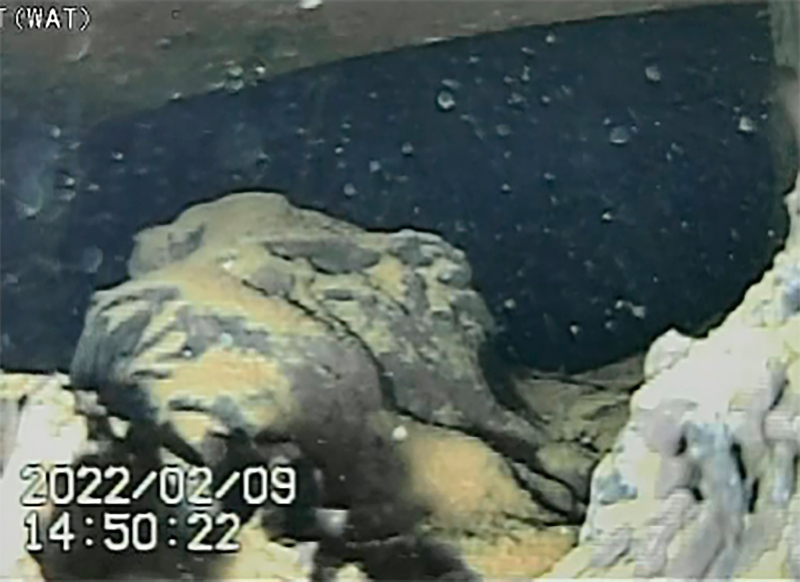A remote-controlled robot has captured images of what appears to be mounds of nuclear fuel that melted and fell to the bottom of the most damaged reactor at Japan's wrecked Fukushima nuclear plant, officials said Thursday.
A massive earthquake and tsunami in 2011 damaged cooling systems at the power plant, causing the meltdown of three reactor cores. Most of their highly radioactive fuel fell to the bottom of their containment vessels, making its removal extremely difficult.
A previous attempt to send a small robot with cameras into the Unit 1 reactor failed, but images captured this week by a ROV-A robot show broken structures, pipes and mounds of what appears to be melted fuel and other debris submerged in cooling water, plant operator Tokyo Electric Power Company Holdings said Thursday.
About 900 tons of melted nuclear fuel remain inside the plant's three damaged reactors, including about 280 tons in Unit 1. Its removal is a daunting task that officials say will take 30-40 years. Critics say that's overly optimistic.
The robot, carrying several tiny cameras, obtained the internal images of the reactor's primary containment vessel while on a mission to establish a path for subsequent probes, TEPCO said.

TEPCO spokesperson Kenichi Takahara said the piles of debris rose from the bottom of the container, including some inside the pedestal — a structure directly beneath the core — suggesting the mounds were melted fuel that fell in the area.
Takahara said further probes will be needed to confirm the objects in the images.
At one location, the robot measured a radiation level of 2 sievert, which is fatal for humans, Takahara said. The annual exposure limit for plant workers is set at 50 millisievert.
The robot probe of the Unit 1 reactor began Tuesday and was the first since 2017, when an earlier robot failed to obtain any images of melted fuel because of the extremely high radiation and interior structural damage.
The fuel at Unit 1 is submerged in highly radioactive water as deep as 2 meters (6.5 feet).
TEPCO said it will conduct additional probes after analyzing the data and images collected by the first robot.
Five other robots, co-developed by Hitachi-GE Nuclear Energy and the International Research Institute for Nuclear Decommissioning, a government-funded consortium, will be used in the investigation over the next several months.
The investigation at Unit 1 aims to measure the melted fuel mounds, map them in three dimensions, analyze isotopes and their radioactivity, and collect samples, TEPCO officials said.
Those are key to developing equipment and a strategy for the safe and efficient removal of the melted fuel, allowing the reactor's eventual decommissioning.
Details of how the highly radioactive material can be safely removed, stored and disposed of at the end of the cleanup have not been decided.
TEPCO hopes to use a robotic arm later this year to remove an initial scoop of melted fuel from Unit 2, where internal robotic probes have made the most progress.